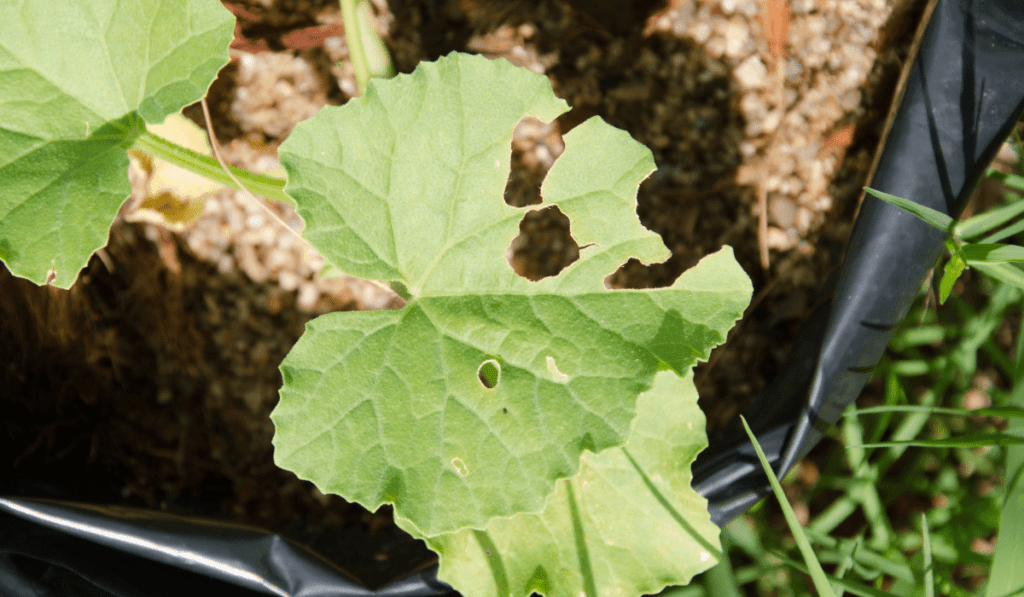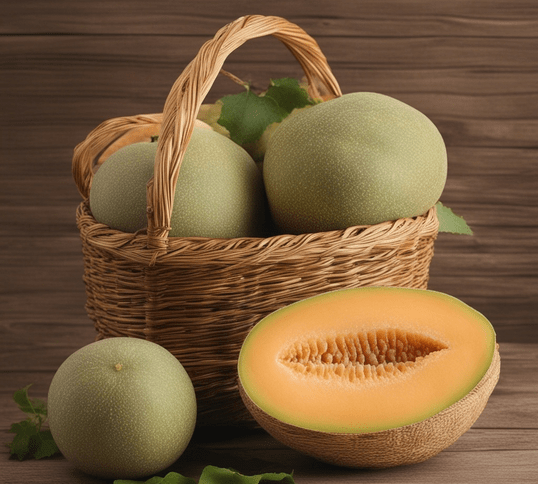Cantaloupe trees, cherished for their sweet and juicy fruits, can fall victim to a variety of pests that can damage the plants and reduce fruit yield. Identifying, preventing, and managing these common pests is essential for a successful harvest. In this guide, we will explore ten common pests that affect cantaloupe trees, providing information on their identification, prevention, and effective management strategies.
1. Aphids
- Identification: Aphids are tiny, soft-bodied insects that cluster on the undersides of leaves, sucking plant sap and causing leaves to curl.
- Prevention: Encourage natural predators like ladybugs and lacewings, and regularly inspect your plants for early signs of infestation.
- Management: Use a strong stream of water to dislodge aphids, apply insecticidal soap, or use neem oil as a control measure.
2. Spider Mites
- Identification: Spider mites are microscopic pests that create fine webbing on leaves and cause stippling, leading to leaf discoloration.
- Prevention: Maintain proper humidity levels, as spider mites thrive in dry conditions, and keep your garden clean to reduce their hiding places.
- Management: Use insecticidal soap or neem oil to control spider mite infestations, and consider introducing predatory mites.
3. Whiteflies
- Identification: Whiteflies are small, white insects that congregate on the undersides of leaves, causing yellowing and weakening of the plants.
- Prevention: Use reflective mulch to deter whiteflies, and employ yellow sticky traps to monitor and trap adult flies.
- Management: Apply insecticidal soap, neem oil, or release beneficial insects like parasitic wasps to control whiteflies.
4. Thrips
- Identification: Thrips are slender insects that feed on leaves, leaving behind silver streaks or specks and causing leaf curling.
- Prevention: Remove weeds that may harbor thrips, and keep your garden clean to reduce their hiding spots.
- Management: Introduce beneficial predators like predatory mites and ladybugs, or use insecticidal soap to control thrips.
5. Cutworms
- Identification: Cutworms are caterpillar-like larvae that chew through plant stems near the soil line, causing wilting or plant death.
- Prevention: Use physical barriers like cardboard collars around young plants to protect them from cutworms.
- Management: Handpick cutworms when spotted, and apply biological controls like parasitic nematodes.
6. Squash Bugs
- Identification: Squash bugs are flat, shield-shaped insects that feed on leaves, causing wilting and yellowing.
- Prevention: Rotate crops to disrupt their life cycle, and handpick adult squash bugs and their eggs.
- Management: Apply insecticidal soap or neem oil, and use traps to capture adult squash bugs.
7. Cucumber Beetles
- Identification: Cucumber beetles are small, striped or spotted insects that feed on leaves and transmit diseases.
- Prevention: Plant trap crops like radishes to lure cucumber beetles away from cantaloupes, and use row covers.
- Management: Apply neem oil or release natural predators like parasitic wasps to control cucumber beetle populations.
8. Cutworms
- Identification: Cutworms are caterpillar-like larvae that chew through plant stems near the soil line, causing wilting or plant death.
- Prevention: Use physical barriers like cardboard collars around young plants to protect them from cutworms.
- Management: Handpick cutworms when spotted, and apply biological controls like parasitic nematodes.
9. Squash Bugs
- Identification: Squash bugs are flat, shield-shaped insects that feed on leaves, causing wilting and yellowing.
- Prevention: Rotate crops to disrupt their life cycle, and handpick adult squash bugs and their eggs.
- Management: Apply insecticidal soap or neem oil, and use traps to capture adult squash bugs.
10. Cucumber Beetles
- Identification: Cucumber beetles are small, striped or spotted insects that feed on leaves and transmit diseases.
- Prevention: Plant trap crops like radishes to lure cucumber beetles away from cantaloupes, and use row covers.
- Management: Apply neem oil or release natural predators like parasitic wasps to control cucumber beetle populations.
Conclusion
Effectively identifying, preventing, and managing common pests is vital for the health and productivity of your cantaloupe trees. By implementing these strategies and staying vigilant, you can protect your plants and ensure a bountiful harvest of delicious cantaloupes.



